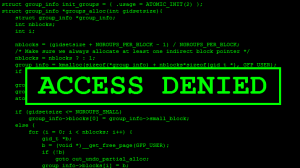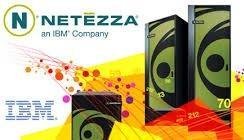 This one has been irking me for quite a bit. If you have to insert multiple rows into a table from a list or something, you may be tempted to use the standard PostgreSQL method of…
This one has been irking me for quite a bit. If you have to insert multiple rows into a table from a list or something, you may be tempted to use the standard PostgreSQL method of…
INSERT INTO TABLE_NAME VALUES (1,2,3), (4,5,6), (7,8,9) ;
Be warned – THIS WILL NOT WORK IN NETEZZA! Netezza does not allow for the insertion of multiple rows in one statement if you are using VALUES.
You have two options here: 1) create a file with your values and load it (see Loading Data into Netezza post) or 2) use individual INSERT INTO statements. With a small, simple set of records like the one above, the second method will do fine. It would look like this…
INSERT INTO TABLE_NAME VALUES (1,2,3); INSERT INTO TABLE_NAME VALUES (4,5,6); INSERT INTO TABLE_NAME VALUES (7,8,9);
If you have larger sets of data to insert or more complex row structures, consider using an external table.
Official documentation for IBM Netezza INSERT command.

 Netezza is a super-fast platform for databases… once you have data on it. Somehow, getting the data to the server always seems like a bit of a hassle (admittedly, not as big a hassle as old school punchcards). If you’re using Netezza, you’re probably part of a large organization that may also have some hefty ETL tools that can do the transfer. But if you’re not personally part of the team that does ETL, yet still need to put data onto Netezza, you’ve got to find another way. The EXTERNAL TABLE functionality may just be the solution for you.
Netezza is a super-fast platform for databases… once you have data on it. Somehow, getting the data to the server always seems like a bit of a hassle (admittedly, not as big a hassle as old school punchcards). If you’re using Netezza, you’re probably part of a large organization that may also have some hefty ETL tools that can do the transfer. But if you’re not personally part of the team that does ETL, yet still need to put data onto Netezza, you’ve got to find another way. The EXTERNAL TABLE functionality may just be the solution for you.

 Let’s say you have a process that requires a start date, but may or may not have an end date, as a parameter feeding in. How can you accomplish this in Netezza via a stored procedure? The internet has not had great answers to this question but it’s not as hard as some other programmers make it out to be. So today we tackle optional arguments – in easy mode.
Let’s say you have a process that requires a start date, but may or may not have an end date, as a parameter feeding in. How can you accomplish this in Netezza via a stored procedure? The internet has not had great answers to this question but it’s not as hard as some other programmers make it out to be. So today we tackle optional arguments – in easy mode. I’ve recently come to love (read:be obsessed with) windowing functions in my coding. They’re just so useful and practical.
I’ve recently come to love (read:be obsessed with) windowing functions in my coding. They’re just so useful and practical.  Imagine, if you will, begin able to calculate the time between visits to a website, transactions in a store, logs from a punch-clock, etc. in just one step. Well, I have found the way!
Imagine, if you will, begin able to calculate the time between visits to a website, transactions in a store, logs from a punch-clock, etc. in just one step. Well, I have found the way!
 Fun new conundrum in dealing with data formats/displays in PostgreSQL! A client recently requested that we provide a data extract that included percentages as a three character number, left zero-padded, rather than a decimal/numeric. There’s not a great way in Postgres to show a numeric with leading zeros (actually, I’ve yet to find a data type that does this consistently as a built-in to any platform). Instead, you have to do a little bit of work to get to your end result as a character (or text) field.
Fun new conundrum in dealing with data formats/displays in PostgreSQL! A client recently requested that we provide a data extract that included percentages as a three character number, left zero-padded, rather than a decimal/numeric. There’s not a great way in Postgres to show a numeric with leading zeros (actually, I’ve yet to find a data type that does this consistently as a built-in to any platform). Instead, you have to do a little bit of work to get to your end result as a character (or text) field. One of the most basic calculations on dates is to tell the time elapsed between two dates. Often it is more helpful to show the date as a number of months rather than a number of days. In PostgreSQL, subtracting one date from another will yield a number of days that then takes a tremendously complex formula to manipulate into months.
One of the most basic calculations on dates is to tell the time elapsed between two dates. Often it is more helpful to show the date as a number of months rather than a number of days. In PostgreSQL, subtracting one date from another will yield a number of days that then takes a tremendously complex formula to manipulate into months.